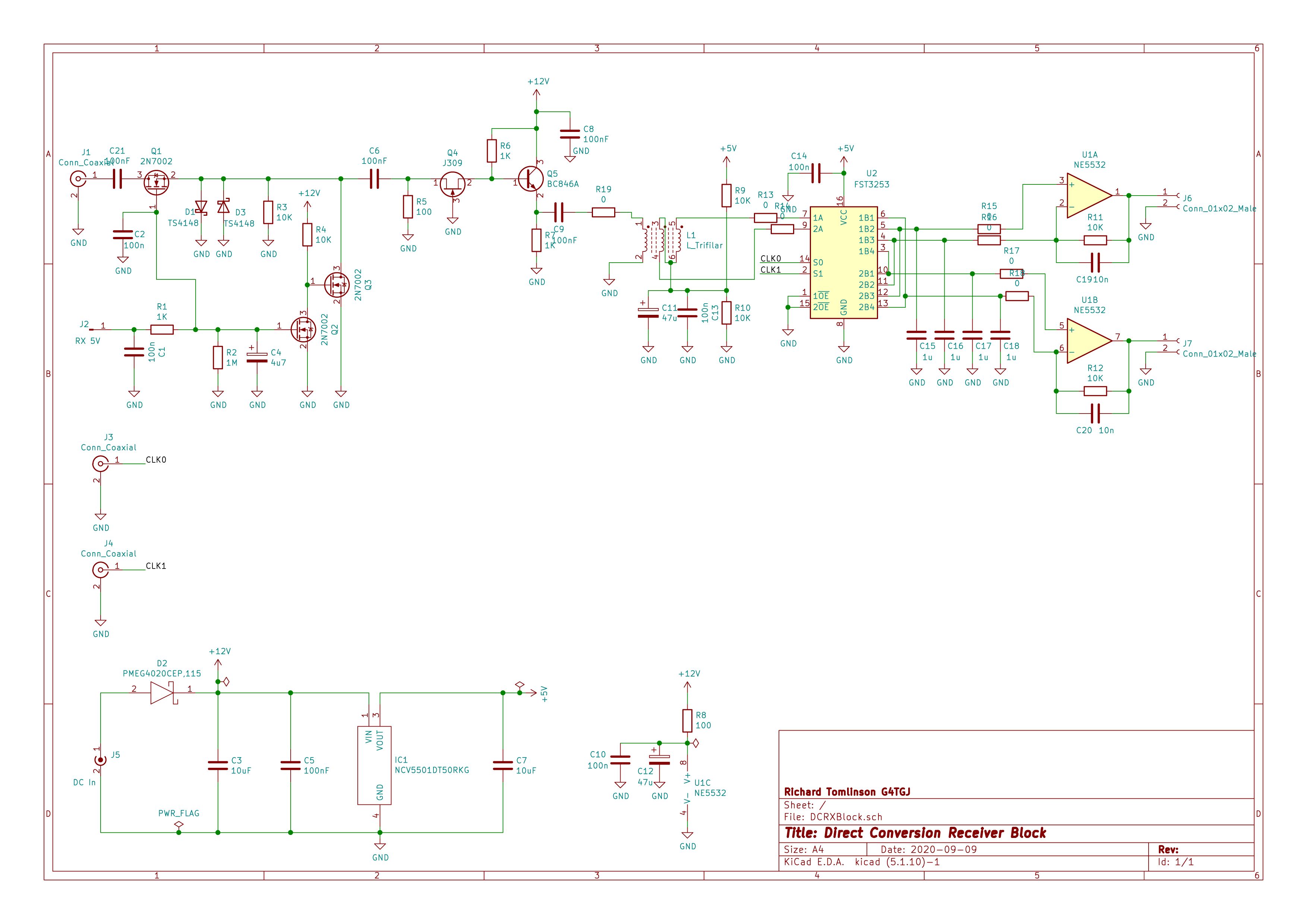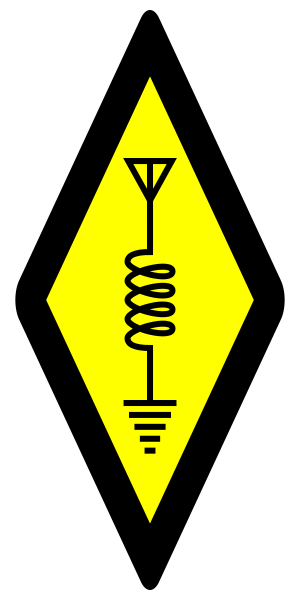Original Direct Conversion Receiver Block
This is the original version of the direct conversion receiver block. I used it in the Two Band SOTA Transceiver.
The direct conversion receiver block takes the antenna input (J1) from the transmit board’s LPF and outputs audio I/Q for feeding to the audio phasing and amplifier board. It
includes a pre-amp but I eventually disabled this as I found it often overloaded. There is plenty of gain so I have never missed it. On higher bands than 20m it might be useful.

Q1, Q2 and Q3 form a switch to mute the receiver on transmit. The enable line from J2 is high on receive switching on Q1 and Q2. This switches off Q3. On transmit the enable line is low switching off Q1 and Q2. This causes Q3 to be switched on by R4, shorting out the receiver input. When switching between transmit and receive C4 charges or discharges through R1 so that the transition is not too abrupt. R2 is there to ensure the the gates of Q1 and Q2 are grounded if there is no connection to the enable line.
D1 and D3 offer additional protection from transmit signals. Q1 needs to withstand high transmit voltages. I used a BSS123 as I managed to blow a 2N7002 on transmit here. Q2 and Q3 could also be BSS123 (or probably almost any small MOSFET) as could all the other MOSFETs in the transceiver, except for the transmit PAs.
L1 provides differential signals for U2, the FST3253 Tayloe detector, with differential outputs connected to U1 which provides around 30dB of gain before feeding the I and Q signals to J6 and J7. The two quadrature clocks from the clock and control board are fed to J3 and J4.
J5 is the 12V input with D2 protecting against reverse polarity and IC1 is a 5V regulator for the FST3253.
